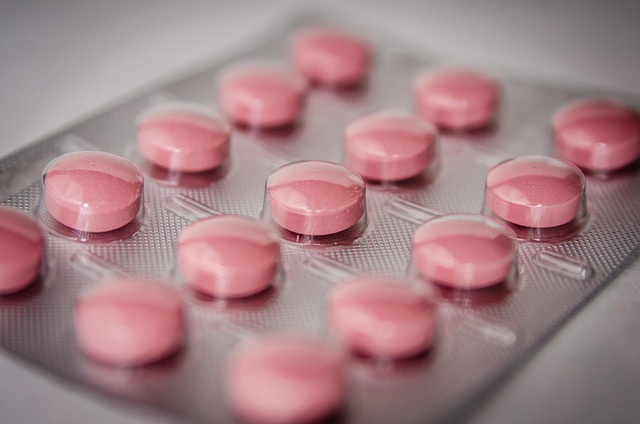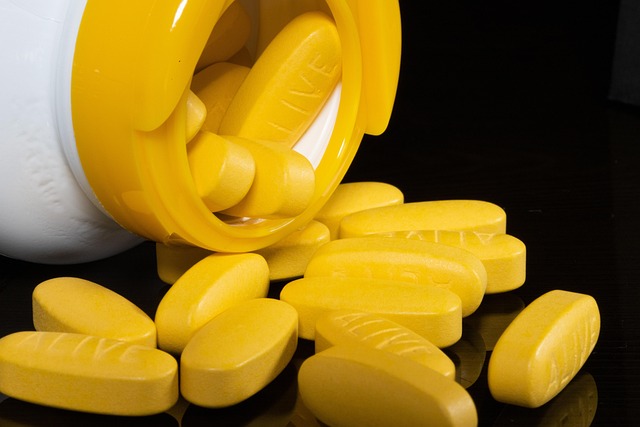GLP-1 agonists (drugs) mimic nature's hormone GLP-1 to effectively regulate blood sugar in type 2 diabetes, offering improved glycemic control and weight loss benefits. They work by stimulating insulin secretion and reducing glucagon release. Available as injections or oral medications, these drugs offer cost savings and once-daily administration convenience. Clinical trials show superior performance compared to other treatments, with added cardiovascular benefits. Individualized treatment plans, tailored to patients' health and lifestyle, ensure optimal efficacy and minimize side effects.
GLP-1 agonists have emerged as a powerful tool in diabetes management, offering improved blood sugar control and multifaceted benefits. This article delves into the comparison of efficacy among these innovative GLP-1 drugs, exploring their mechanism of action, diverse forms (injections vs. oral), and their impact on glycemic control, weight loss, and cardiovascular health. Understanding the unique characteristics of each drug is crucial for healthcare professionals in tailoring treatment strategies to individual patient needs.
Understanding GLP-1 Agonists: Their Role in Diabetes Management

GLP-1 agonists, or glucagon-like peptide-1 drugs, are a class of medications that mimic the effects of the naturally occurring hormone GLP-1. This hormone plays a crucial role in regulating blood sugar levels by stimulating insulin secretion when needed and reducing glucagon release. By enhancing insulin’s action, GLP-1 agonists help lower blood glucose, making them valuable tools in diabetes management. These drugs are particularly effective for people with type 2 diabetes, as they not only improve glycemic control but also provide additional benefits like weight loss and reduced cardiovascular risk.
In the context of diabetes care, GLP-1 agonists offer a novel approach compared to traditional insulin or sulfonylureas. They provide better blood sugar control with fewer side effects, such as hypoglycemia. The convenience of once-daily administration and their ability to promote satiety, leading to weight management, make them a game-changer for many patients. With ongoing research, these drugs continue to be refined, offering hope for improved diabetes treatment options in the future.
Mechanism of Action: How These Drugs Mimic Natural Hormones

GLP-1 agonists work by mimicking the effects of a natural hormone called glucagon-like peptide-1 (GLP-1), which is secreted in the gut in response to food. This hormone plays a crucial role in regulating blood sugar levels by stimulating insulin release from the pancreas when needed and suppressing the production of glucagon, a hormone that raises blood sugar.
These drugs bind to specific receptors in the body, such as those found on beta cells in the pancreas, emulating the natural action of GLP-1. This binding triggers a cascade of events leading to improved insulin secretion and reduced glucagon release, ultimately helping to lower blood sugar levels effectively. By duplicating this natural mechanism, GLP-1 drugs offer a targeted approach to managing diabetes and have been shown to be highly effective in improving glycemic control.
Types of GLP-1 Agonists: Injections vs. Oral Medications

GLP-1 agonists are a class of drugs used to manage type 2 diabetes by mimicking the effects of the natural hormone GLP-1 (glucagon-like peptide-1). These drugs can be broadly categorized into two types based on their administration method: injections and oral medications.
Injection GLP-1 drugs, such as exenatide and liraglutide, are typically administered once or twice daily. They offer the advantage of faster onset of action compared to oral formulations, making them a preferred choice for some patients. On the other hand, oral GLP-1 agonists like semaglutide and dulaglutide provide convenience as they can be taken once weekly. While injections may have higher initial costs, oral medications generally offer cost-effectiveness over time. Both forms of administration have shown promising results in improving glycemic control and aiding weight loss, contributing to their growing popularity among GLP-1 drugs.
Efficacy in Blood Sugar Control: A Comparative Analysis

GLP-1 agonists have established themselves as a powerful tool in the management of type 2 diabetes, offering significant advantages in blood sugar control. These drugs mimic the effects of the natural hormone glucagon-like peptide-1 (GLP-1), which stimulates insulin secretion and suppresses glucagon release when blood glucose levels rise. In clinical trials, GLP-1 drug treatments have shown remarkable efficacy in lowering HbA1c levels—a key marker for long-term blood sugar control—compared to placebo or other anti-diabetic medications.
When directly comparing different GLP-1 agonists, certain drugs have demonstrated superior performance in blood sugar regulation. For instance, some studies suggest that certain GLP-1 drugs are more effective at reducing fasting plasma glucose levels and improving overall glycemic control. This enhanced efficacy can be attributed to the unique pharmacological profiles of individual GLP-1 agonists, including their half-life, binding affinity, and mode of administration. As a result, healthcare professionals often consider these comparative analyses when selecting a GLP-1 drug for a patient, aiming to optimize blood sugar management while minimizing adverse effects.
Additional Benefits: Weight Loss and Cardiovascular Effects

GLP-1 agonists, a class of drugs designed to mimic the effects of the gut hormone GLP-1, offer significant benefits beyond their primary role in blood sugar control. One of the notable additional advantages is their potential for weight loss. Several clinical trials have demonstrated that these medications can lead to substantial and sustained weight reduction, which is particularly important given the global obesity epidemic. This effect is attributed to increased feelings of fullness and reduced appetite, leading to decreased calorie intake.
Moreover, GLP-1 drugs have shown promising cardiovascular effects. Research suggests they may reduce the risk of heart disease and stroke by lowering blood pressure, improving cholesterol levels, and stabilizing irregular heart rhythms. These cardiovascular benefits further highlight the potential for a holistic improvement in health outcomes among patients with type 2 diabetes or prediabetes.
Patient Considerations and Individualized Treatment Strategies

When considering treatment with GLP-1 agonists, patient considerations play a crucial role in determining the most effective approach. Each individual’s medical history, current health status, and lifestyle factors should be meticulously evaluated to tailor the therapy accordingly. For instance, patients with specific comorbidities like kidney or liver disease may require dose adjustments or alternative options. Additionally, those with a history of pancreatitis or gastrointestinal issues need careful monitoring due to potential side effects related to these drugs’ mechanism of action.
Individualized treatment strategies are essential for optimal GLP-1 drug efficacy. Healthcare providers should discuss patient preferences and lifestyle changes, such as diet and exercise routines, which can enhance the benefits of these medications. Moreover, regular follow-ups and frequent communication ensure that any adjustments or disruptions in therapy are promptly addressed, allowing for continuous optimization of blood glucose control while minimizing adverse effects.
